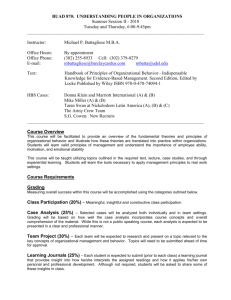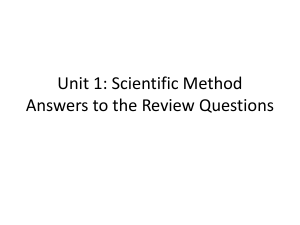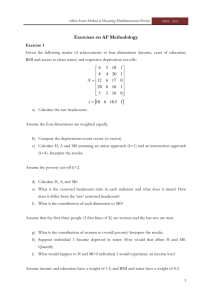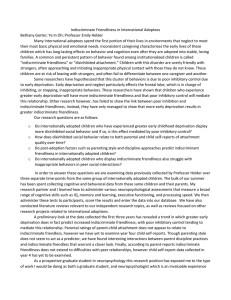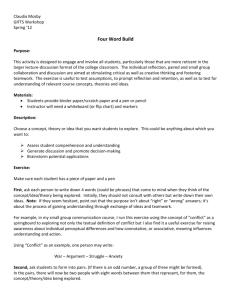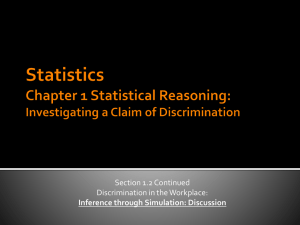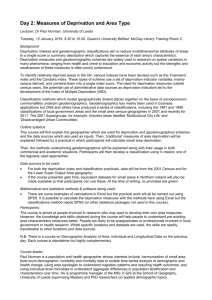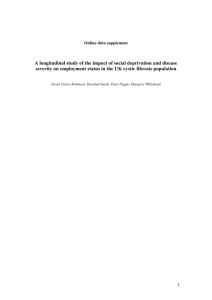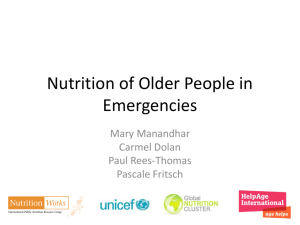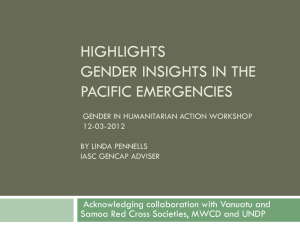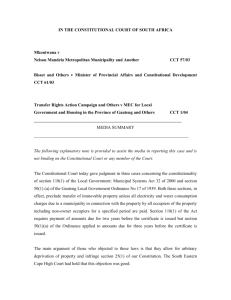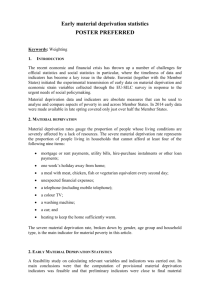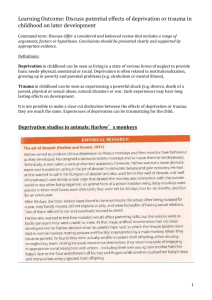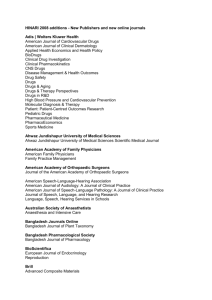PVerwimp session 4
advertisement
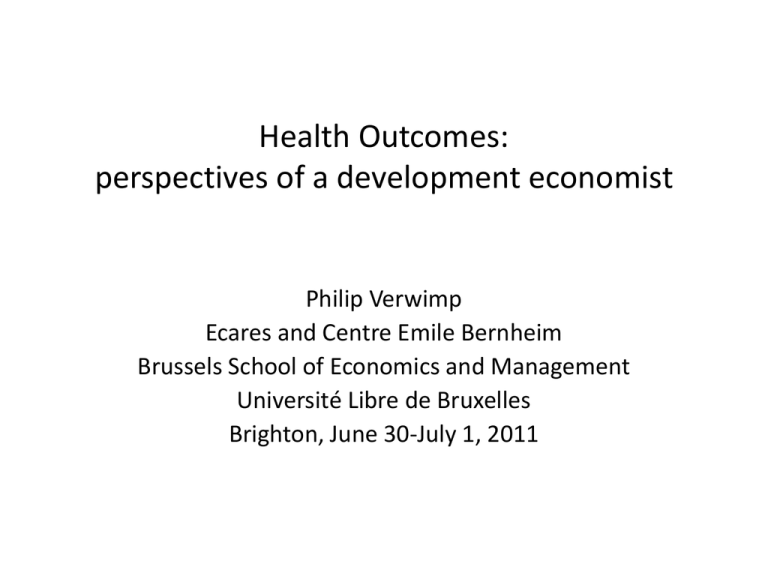
Health Outcomes: perspectives of a development economist Philip Verwimp Ecares and Centre Emile Bernheim Brussels School of Economics and Management Université Libre de Bruxelles Brighton, June 30-July 1, 2011 State-of-the-art (1) • Health is one of the most important indicators of human well-being. It is also one of the most important objectives of policy worldwide and it is probably the domain in which human beings have produced the most scientific output • Research in the domain of human biology and economics has recently focussed on the long-term consequences of food deprivation during child hood (Alderman, Hoddinott, and Kinsey, 2006, Strauss and Thomas, 1998) State-of-the-art (2) • There is a biological mechanism that runs via food deprivation. Undernutrition leads to stunting, which is an indicator of the longer-term health status of a child. (Martorel and Habicht, 1986) • The medical literature has schown that there is only partial catch-up in the event that conditions after age 0-5 improve subtantially • This means that food deprivation in childhood has consequences that will stay with the child throughout its life in terms of reduced human development Key questions • • • • How does violent conflict impact health ? What are the channels ? Who is affected and under which conditions? Is impact short term and reversible or longterm and (partly) irreversable • What is the magnitude of impact ? • How can policy prevent/lower the impact New insights from Microcon • Akresh, et al (2009,2011), Journal of Human Resources, Economic Development and Cultural Change Exposure to violent conflict in child age 0-5 has long-term negative consequences on the wellbeing of the child, in terms of health, school participation, grade attainment, cognitive development and income earnings potential New insights (2) • Undernutrition is an import part of the story of the impact of conflict on child health, but it is not the only one • Apart from nutrition the exposure of children to violent conflict also includes displacement, no shelter, no access to health service, loss of family members, trauma, …. New insights (3) • Akresh et all point out that the effects of civil war are not the same as those of a crop failure or a famine. Both will affect nutrition, but the effect of the civil war will be more indiscriminate across gender and income groups. • At least in their research on Rwanda and Burundi they find that the health status of boys as well as girls, from rich as well as poor famillies, was negatively affected by exposure to war, whereas this was only the case for girls in poor households in the event of crop failure 0 -1 -2 -3 -4 1/87 7/87 1/88 7/88 1/89 7/89 1/90 Month & Year of Birth 1/91 7/91 1/92 Rest of Country-Female -4 -3 -2 -1 0 CropFailureRegion-Female 7/90 1/87 7/87 1/88 7/88 1/89 7/89 1/90 Month & Year of Birth CropFailureRegion-Male 7/90 1/91 7/91 Rest of Country-Male 1/92 0 -1 -2 -3 -4 1/87 7/87 1/88 7/88 1/89 7/89 1/90 Month & Year of Birth 1/91 7/91 1/92 Rest of Country-Female -4 -3 -2 -1 0 CivilWarRegion-Female 7/90 1/87 7/87 1/88 7/88 1/89 7/89 1/90 Month & Year of Birth CivilWarRegion-Male 7/90 1/91 7/91 Rest of Country-Male 1/92 -1.5 -2 -2.5 -3 -20 -15 -10 -5 0 5 10 Months of War Exposure 95% CI 15 Height for Age Z-Score 20 25 New insights (4) • Magnitude of the effcects ? In both our Burundi and Rwanda samples the average exposure of our children is somewhat higher than 1 year. • We find that this lowers the child’s height-for-age zscore with about 1 standard deviation, As a result, the child will start schooling on average 6 months, obtain one grade less of schooling and earn a 15 to 20% lower wage as an adult. Relevance for policy • Exposure to violent conflict during childhood, even short term, will have long-term negative effects on the well-being of the child • The effect runs through undernutrition, but there are also other channels • The effect is likely to be indiscriminate • Prevention and intervention in childhood has large pay-offs in terms of human development
